Top 10s: New Retro-mobiles
By John LeBlanc
You can’t bring back the past. But with some new cars these days, you can certainly try and buy it. Volkswagen’s 1999 New Beetle started the modern retro-mobile (old-fashioned clothes over modern mechanicals) trend. Using an existing front-engine Golf chassis, it was styled to look like the rear-engine “Bug” that became a cultural icon in the 1960s, and nostalgic Baby Boomers made it a sales hit. Over a decade after the New Beetle’s debut, there are still plenty of new retro-mobiles on sale. Here are my top 10:
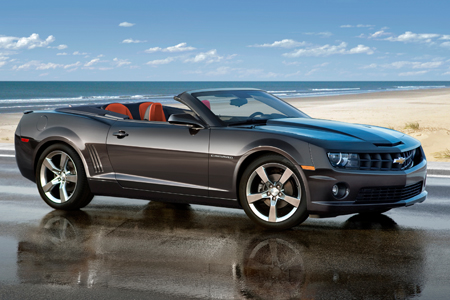 2011 Chevrolet Camaro
2011 Chevrolet Camaro
The last Chevrolet Camaro, the 1993 to 2002 fourth-generation, stuck to the same ethos as the original 1967 model: 2+2 seating, rear-wheel-drive and lots of horsepower under the hood. But after four decades, Chevy designers had evolved the look to that of a modern jet fighter. Or at least they tried. But the future was forsaken for the past when the fifth-generation Camaro debuted as a concept at the 2006 Detroit auto show. Instead of designing a car for the 21st century, Chevy designers took inspiration from the original Camaro, specifically the 1969 model.
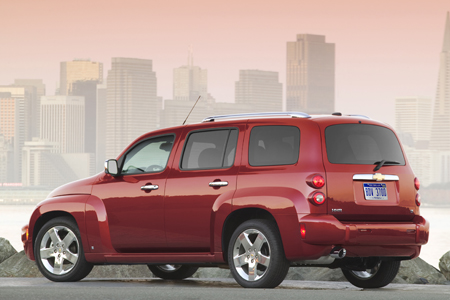 2011 Chevrolet HHR
2011 Chevrolet HHR
In an attempt to mimic the success of Chrysler’s 2000 PT Cruiser retro-mobile, five years later, Chevy debuted its nostalgia machine: the HHR (High Heritage Roof). Where the tall Chrysler wagon was based on front-wheel-drive Dodge Neon mechanicals and designed to evoke memories of American cars from the 1940s, the Chevy tall wagon used a FWD Cobalt chassis, and a design inspired by the 1949 Chevrolet Suburban. It was no coincidence the HHR was penned by Bryan Nesbitt, the same designer who penned the PT Cruiser when he worked at Chrysler.
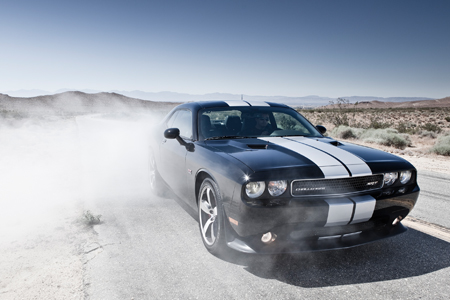 2011 Dodge Challenger
2011 Dodge Challenger
Riding the same wave of Boomer nostalgia, like the new Camaro, the new, third-generation Challenger looks back — way, back — to the early 1970s muscle car era for its retro-mobile design mojo. Quietly forsaking the Mitsubishi-made second-generation 1978 to ’83 four-cylinder Challenger coupes, the current Dodge 2+2 two-door coupe is supposed to be the modern reincarnation of the 1970 to ’74 first-generation muscle car era models. While the Challenger’s chassis is borrowed from Germany’s Mercedes-Benz (and shared with the Charger and Chrysler 300 four-door sedans), the Challenger’s modern HEMI V8s are strictly all-American muscle.
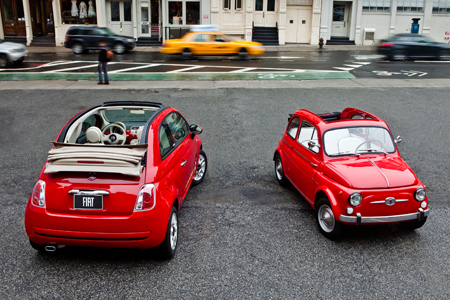 2011 Fiat 500
2011 Fiat 500
You just have to scroll down to “Mini Cooper” to see why the 500 retro-mobile — or Cinquecento — exists today. Just as BMW’s Mini is a modern riff on a post-World War Two design icon (the Austin Mini in England), the Fiat is a modern take on the original Fiat 500, an inexpensive city runabout car that was launched in 1957. First seen as the Fiat Trepiuno concept at the 2004 Geneva auto show, the production 2+2 front-wheel-drive two-door 500 hatchback model was launched in Europe in 2007 and is just arriving in Canada this year. Unlike the original’s rear-engine design, the modern 500 is based largely on Fiat’s front-engine subcompact Panda chassis.
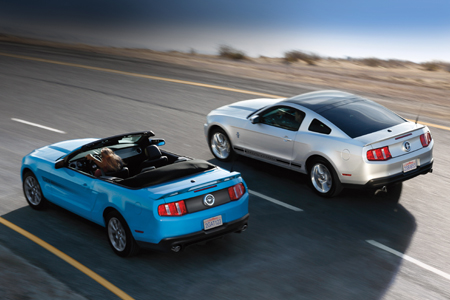 2011 Ford Mustang
2011 Ford Mustang
The popularity of Japanese coupes in the 1980s forced Ford to reconsider the whole Mustang theme. But at the last minute, the Mazda-based FWD ‘Stang became the 1989 to 1997 Ford Probe. Except for that blip, during its 47-plus years on the market, Ford has stayed close to the magic formula that made the original 1964 Mustang one of the best-selling cars in history. The current, fifth-generation Mustang that arrived in 2005 keeps the retro-mobile theme alive. But instead of 1964, the Ford coupe is meant to mimic the aggressive looks of the 1969 to ’70 muscle car era models, and its success with buyers played a huge role in Chevrolet and Dodge resurrecting their Camaro and Challenger retro-mobiles shortly thereafter.
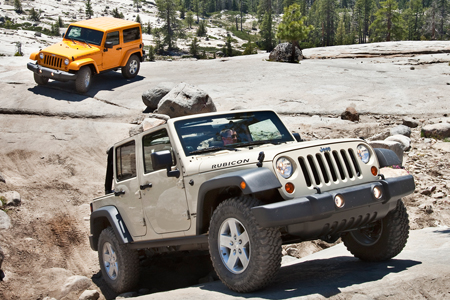 2011 Jeep Wrangler
2011 Jeep Wrangler
In an age where aerodynamics and space efficiency play such an important role in car design, Jeep’s Wrangler retro-mobile sticks out from the crowd. That’s what happens when your design brief is dated from 1944. Designed to conjure up images of American soldiers winning World War Two, the Wrangler’s design essentially uses the same DNA (flat grille, round headlights, rectilinear bodywork and table-top fenders) as the first civilian-issue Willys CJ-2 from over half-a-century ago.
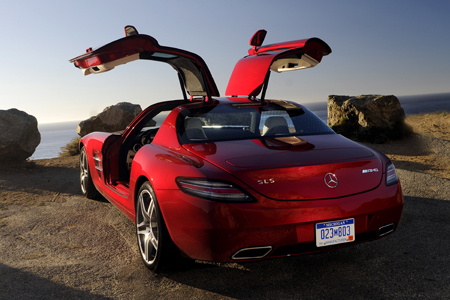 2011 Mercedes-Benz SLS AMG Gullwing
2011 Mercedes-Benz SLS AMG Gullwing
The new SLS AMG two-seat super car effectively replaces the former SLR McLaren model that was designed with the help of Britain’s McLaren Formula One gang. But while the 2003 to 2010 SLR presented a clean sheet, modern design, Mercedes isn’t hiding the fact that its designer’s went back in time with its new flagship SLS AMG “Gullwing”. As hinted at in its name, the SLS AMG retro-mobile’s exterior design — highlighted by a pair of top-hinged, or “gull wing”, doors — is intended to stir up memories of its 1952 300 SL Gullwing racecar, one of the most successful sports cars of its day.
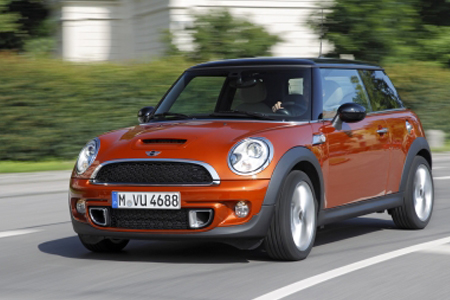 2011 Mini Cooper
2011 Mini Cooper
Using an all-new, modern chassis and mechanicals, BMW’s reinterpretation of one of the most iconic autos of the 20th century has been nothing but a retro-mobile success. With what started in 2002 as a two-door Mini Cooper hatchback — that was designed to look like the venerable 1959 to 2000 Austin Mini city car — the Mini franchise has added convertible, three-door (Clubman), four-door (Countryman) and upcoming Coupe and Roadster models. The next modern Mini, though, may be the most true to its retro-mobile roots. Smaller than the existing Cooper hatch, this year’s Rocketman concept precludes an even smaller Mini on the horizon that will be more in size with the 1950s original.
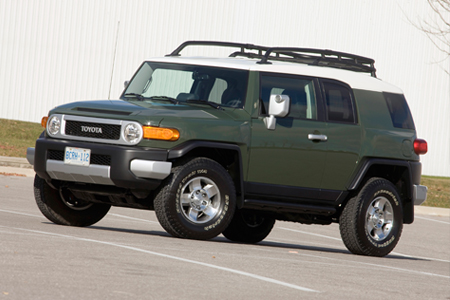 2011 Toyota FJ Cruiser
2011 Toyota FJ Cruiser
Without the longstanding design heritage that some of its rivals enjoy, Toyota decided to dig into its SUV past when it ventured into the retro-mobile genre with its FJ Cruiser concept, first seen at the 2003 Chicago auto show and on sale since 2007. Based on the same Toyota midsize truck platform that supports the Tacoma pickup, and 4Runner and Lexus GX SUVs, current FJ Cruiser design features (like the white-painted roof, short wheelbase, grille and headlight design and near-flat windshield) are stolen directly from the FJ40 Land Cruisers of the 1960s.
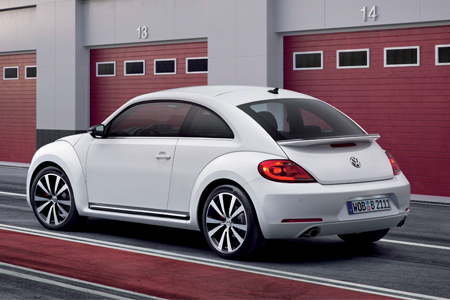 2012 Volkswagen Beetle
2012 Volkswagen Beetle
The car that started the “retro-mobile” craze when it debuted as the Concept 1 at the 2004 Detroit auto show, VW’s 2+2 Beetle drops the “New” for 2012 and moves from being Golf- to Jetta-based. While the production 1999 New Beetle’s theme was based on three circles, VW says the “new” ’12 Beetle digs even deeper in the past, with VW designers bringing in an original 1938 Type I into the studio for inspiration. The 2012 model’s more vertical A-pillar and flatter roofline with its extended rear, or hunchback, are to conjure up memories of the first ever Bug.





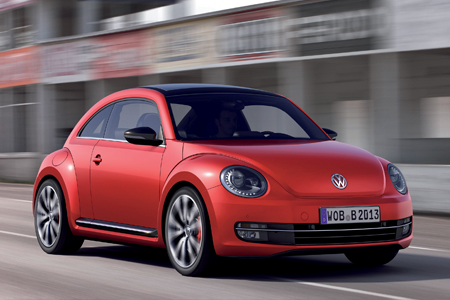
![[del.icio.us]](https://www.straight-six.com/wp-content/plugins/bookmarkify/delicious.png)
![[Digg]](https://www.straight-six.com/wp-content/plugins/bookmarkify/digg.png)
![[Facebook]](https://www.straight-six.com/wp-content/plugins/bookmarkify/facebook.png)
![[Google]](https://www.straight-six.com/wp-content/plugins/bookmarkify/google.png)
![[Reddit]](https://www.straight-six.com/wp-content/plugins/bookmarkify/reddit.png)
![[StumbleUpon]](https://www.straight-six.com/wp-content/plugins/bookmarkify/stumbleupon.png)
![[Twitter]](https://www.straight-six.com/wp-content/plugins/bookmarkify/twitter.png)
![[Email]](https://www.straight-six.com/wp-content/plugins/bookmarkify/email.png)